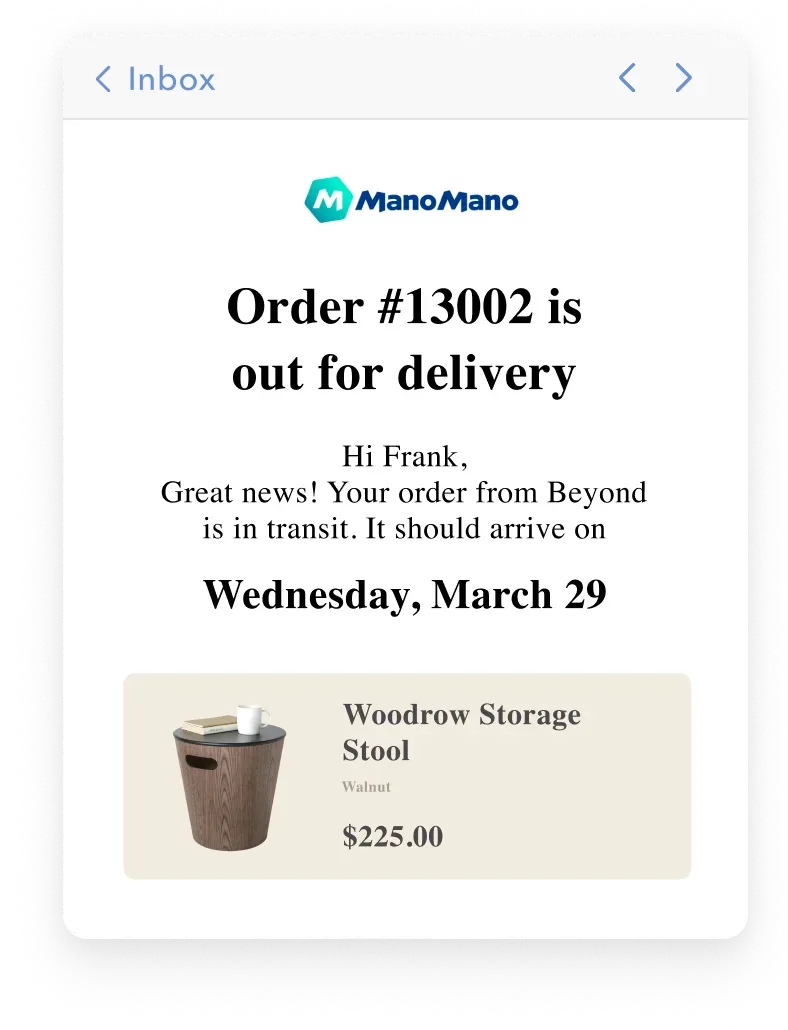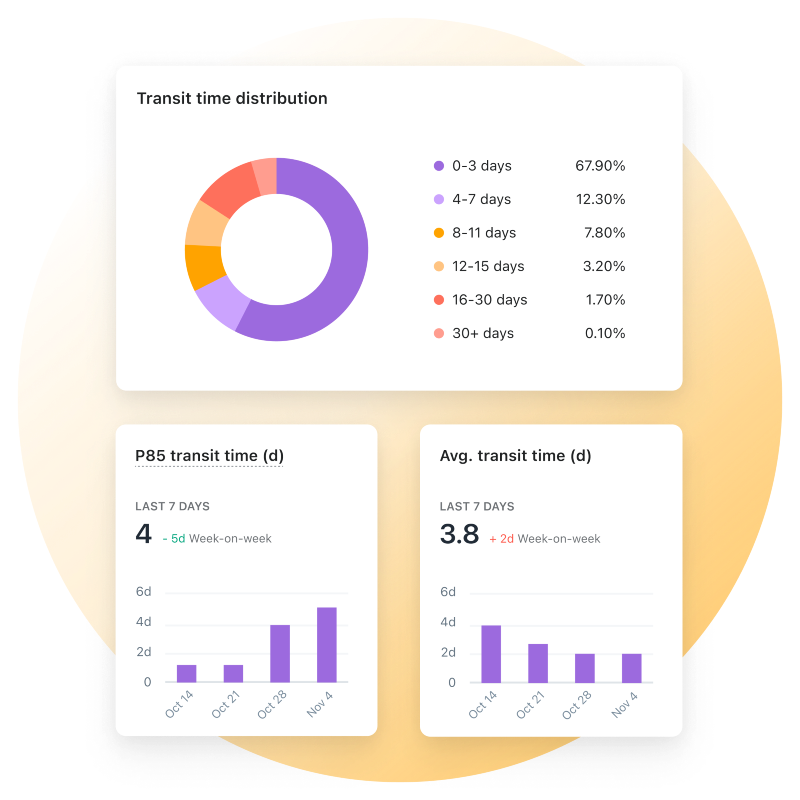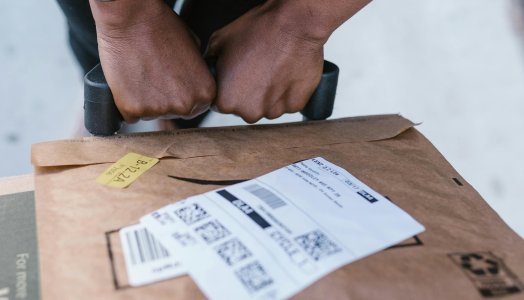Table of contents
What is WISMO?
How can eCommerce businesses reduce WISMO tickets?
1. Offer accurate delivery estimates and send notifications at key stages
2. Notify customers about delivery exceptions
3. Address WISMO concerns on an FAQ page
4. Make tracking services easily accessible across web and mobile
Bonus: Plan ahead for holiday season hang-ups
Why is reducing WISMO so important?
Using a post-purchase platform for WISMO tracking
Back to top
Have you got WISMOs aplenty? Are they setting you back with delays, customer contact overload, low efficiency, and lost revenue? Well, you’ve come to the right place.
Let’s find out how to reduce those WISMO tickets.
What is WISMO?
WISMO is an acronym that stands for “where is my order?”. It’s one of the most common customer queries in eCommerce, and it can come in the form of phone calls, emails, live chat messages, chatbot texts, social media posts, and SMS.
WISMO tickets typically arise from poor order tracking processes. Questions come up when your customers lack clarity around their order statuses, which can be caused by delivery delays (e.g., supply chain issues, extreme weather, etc.) or vague tracking information (e.g., slow updates from carriers). In these situations, your customers will typically ask things like:
- “Where’s my package?”
- “When can I expect delivery?”
- “Can you update me on my order status?”
- “My package is late. What happened?”
- “I’ve been waiting for my order.”
All of these count as WISMO. Put another way, WISMO inquiries come about because customers want more communication and transparency during the shipping process. Too many WISMO queries are actually a symptom of weak customer support and a lack of delivery updates. And, not surprisingly, they can impact brand loyalty in negative ways.
It’s crucial to consider how a seemingly small thing, like a customer asking about their order status, can have such a significant impact on your business and your bottom line. But ask yourself, what drives a customer to reach out in the first place? Generally, it’s anxiety—however low-level it may seem—with their purchase. Clearly, that’s not healthy for your brand. When allowed to accumulate, WISMO requests also lead to high contact rates and an overloaded service team. This worsens if your business and support agents lack tools and data, such as visibility over your customers’ orders.
With each WISMO inquiry costing an estimated $5 to resolve, your support service becomes weighed-down, more expensive, and time-consuming. Customers, on the other end, will be able to sense this inefficiency. Becoming impatient and frustrated, they become more likely to take their business elsewhere.
So, ultimately, a high WISMO count doesn’t paint a pretty picture. If left ignored, it can quickly and negatively affect your customer experience, sales, brand image, and customer retention.
How can eCommerce businesses reduce WISMO tickets?
Clearly, minimizing WISMO—proactively handling these queries before they’re ever asked—should be a priority for all eCommerce merchants. Thankfully, there’s a lid for every pot, as they say, and a solution for every problem.
Here are 4 ways to reduce those WISMO tickets, add value to your business, and increase customer loyalty in the process.
1. Offer accurate delivery estimates and send notifications at key stages
As part of their need for communication, customers expect their orders to come with carrier and delivery window information. They appreciate predictability—so much so, in fact, that customers check their shipment tracking an average of 4.6 times for each online purchase. Communicate your estimated delivery dates (EDDs) from pre-purchase through post-purchase, to reassure your anxious customers, keep them updated, and boost their confidence.
During pre-purchase, EDDs can be shared on product pages or as footnotes on every page. During post-purchase, your delivery estimates can be shared at checkout, in notification emails, and in delivery notifications (via email and/or SMS). These notifications should be sent at critical stages, including ‘dispatch from warehouse,’ ‘package being picked up by carrier,’ and so on.
Providing EDDs lets your customers know that you’re on top of any possible delays and keeps anticipation levels high. Highly accurate EDDs can be generated with the help of AI-powered tools that take into account past carrier performance data.
And you can take it one step further with a branded order status/tracking page.
An order status page gives customers access to their EDDs and order progress in real time. It can also help direct engaged traffic to your website, for remarketing of other products and shopping events. A branded tracking page removes the need for contact with your customer service agents, and in the process, reduces WISMO tickets.
2. Notify customers about delivery exceptions
Delivery exceptions—delays caused by things like bad weather, unforeseen traffic conditions, customs issues, and other variables—are out of your control, but your customers are still likely to hold you responsible for their peace of mind. It’s imperative that you stay abreast of exceptions and share any relevant information with customers as early as possible.
The numbers don’t lie. A study by the UK eCommerce Association found that customers prioritize information on confirmed delivery windows over delivery speed. A separate survey found that 95% of shoppers want consistent communication and updates in the event of delivery delays or mishaps. Such proactive measures improve the overall customer experience in the best way possible: managing customer expectations throughout the order fulfillment process.
Exception scenarios can be less stressful, and the delivery process completely automated, if you integrate your business with an advanced tracking solution like AfterShip. You’ll be able to automate emails for unforeseen circumstances during delivery. This will proactively show that you care and that no issue is overlooked. It’ll go a long way in mitigating WISMO tickets and reassuring customers.
3. Address WISMO concerns on an FAQ page
Customers who are at a loss during the post-purchase phase will likely make a beeline for your online service desk or contact page. Their doubts and anxieties could arise from not having their delivery and tracking information at their fingertips—or worse—if they’re kept in the dark after checkout and during delivery.
If your business isn’t equipped with a tracking tool, a simple solution is to put your customer service details on an FAQ page, or in another easy-to-find location. This gives the process structure and empowers your customers toward self-service. Reiterating your EDDs and exceptions (as above) will also help to soothe anxieties and cut down on WISMO messages and, consequently, the time spent by your support team addressing customer inquiries.
Some questions you may want to answer in FAQ:
- How do I track an order?
- What are your average delivery times?
- How long does shipping take?
- What happens if my order arrives late?
- If my package gets lost, who do I contact?
4. Make tracking services easily accessible across web and mobile
Most eCommerce shoppers are savvy and mobile-first. Of every $4 spent online globally, $3 is paid by a mobile device user. If you’ve integrated a tracking tool/solution, ensure it’s adaptive across various web and mobile devices. Your customers get to monitor their deliveries with just a few clicks, and they get to enjoy a seamless post-purchase journey. You get to reduce those WISMO tickets, and perhaps earn a few glowing reviews along the way.
Consider taking advantage of tracking apps, or features like AfterShip Tracking’s integration with Apple Wallet, to allow customers to check the status of their order on the go.
Bonus: Plan ahead for holiday season hang-ups
To the chagrin of eCommerce managers everywhere, the biggest shopping seasons always seem to coincide with some of the worst weather—at least here in North America. While your Black Friday sale may have done gangbusters, your couriers might be contending with the first blizzard of the year.
And that can lead to more WISMO tickets, especially in FOMO-driven shopping situations…
Thankfully, all of the above advice applies in these cases as well, but you may need to plan in advance to conquer WISMO inquiries at scale. Before BFCM, it’s a good idea to evaluate your automation workflows, your policies and messaging around tracking and returns, and your notifications and tracking page to ensure your customers are informed.
Consider setting up systems for collecting customer feedback specifically related to the order tracking and delivery process throughout the year. Use this feedback to identify areas of improvement and act on them. And when it comes to your teams, stress the importance of continuous improvement in your delivery processes and customer service protocols based on customer feedback and support team insights.
You got this!
Why is reducing WISMO so important?
Reducing WISMO tickets doesn’t just reduce customer service workload, it’s an opportunity to increase customer loyalty, retention, and sales.
Far and away, the simplest solution is to work with a platform like AfterShip. These services can do more than tell customers when their goodies are going to arrive. AfterShip can empower retailers to deliver end-to-end post-purchase experiences that boost revenue and loyalty.
Using a post-purchase platform for WISMO tracking
As always, real-world examples can help us understand how it’s done. Mous, a London-based fashion technology brand, uses AfterShip to manage its monthly shipment volume of over 1,000,000 orders. AfterShip has allowed Mous to set up KPI dashboards that display how well everything is going while alerting the relevant functions to the need for troubleshooting before issues turn into problems.
Before implementing AfterShip, Mous’s contact rate was at 12.9%. This number occasionally reached 20%. In using AfterShip’s tools to communicate proactively with their customers, this number dropped to 5.9%. Easy-to-use data and analytics now give immediate and valuable insight into holdups and delays, enabling Mous to set up targeted communications. Customers can be informed of the exact whereabouts of their packages, and be reassured about in-progress deliveries.
With AfterShip’s dashboard, Mous has received more spontaneous good reviews—as opposed to feedback or complaints—of its post-purchase services. Mous’s success with AfterShip also shows that when customers’ worries and anxieties are alleviated or dispelled, said customers are won over big time and primed to spread the good word about the brand. They’re also likely to repurchase down the line.
With AfterShip, businesses can provide customers with branded, up-to-date shipping notifications that let them track shipments with over 1,000 carriers worldwide. Book a demo now to find out more.
Updated: April 29, 2024
Share this article
Get the week's best eCommerce content
Reduce WISMO tickets by 65% with real-time tracking
Recommended from AfterShip
November 05, 2025
October 16, 2025
October 11, 2025






